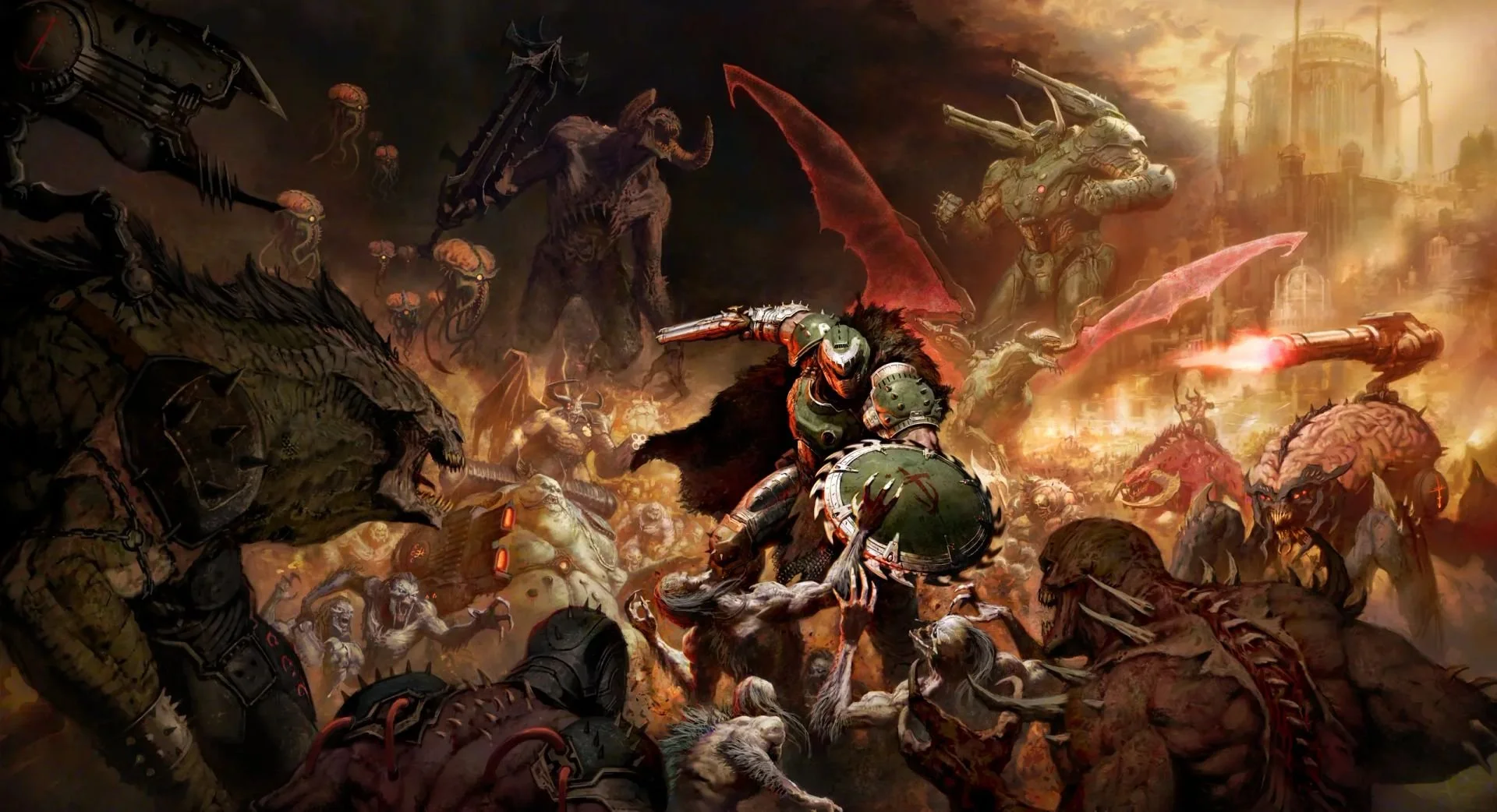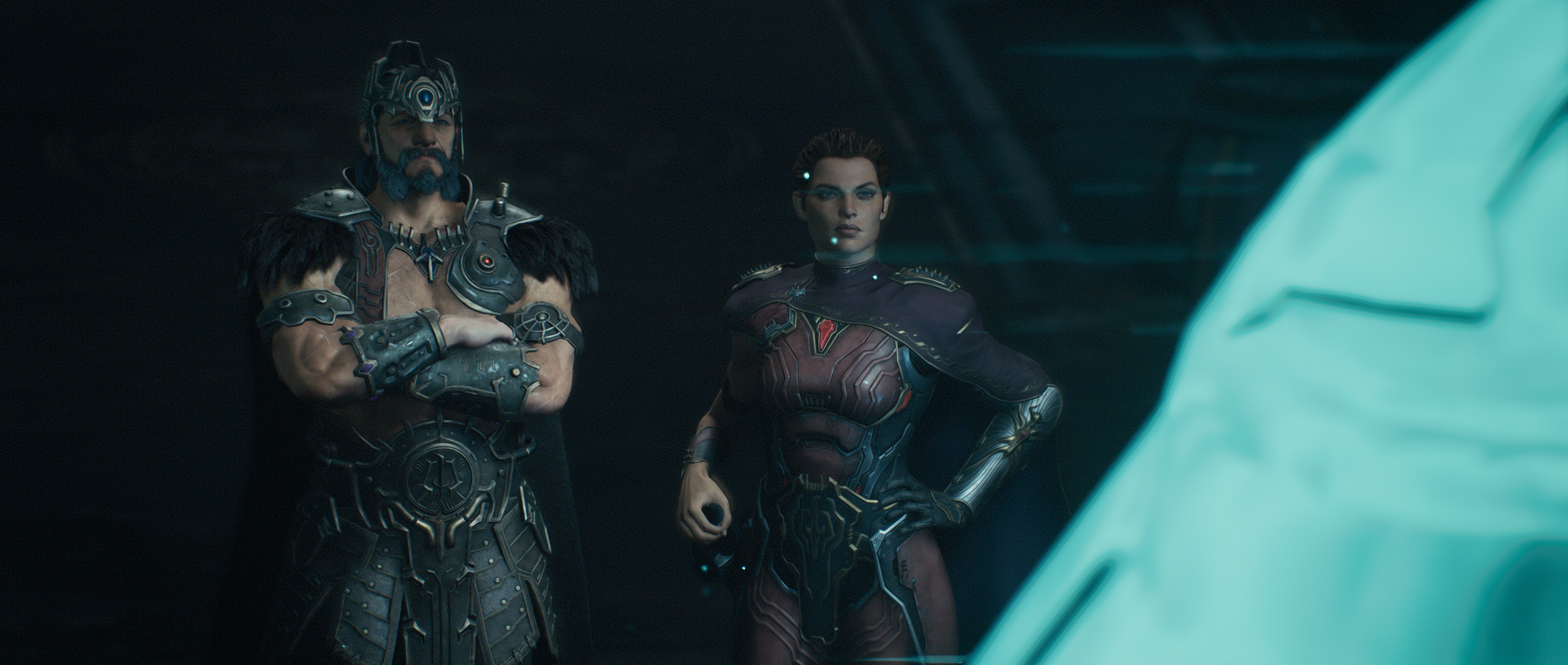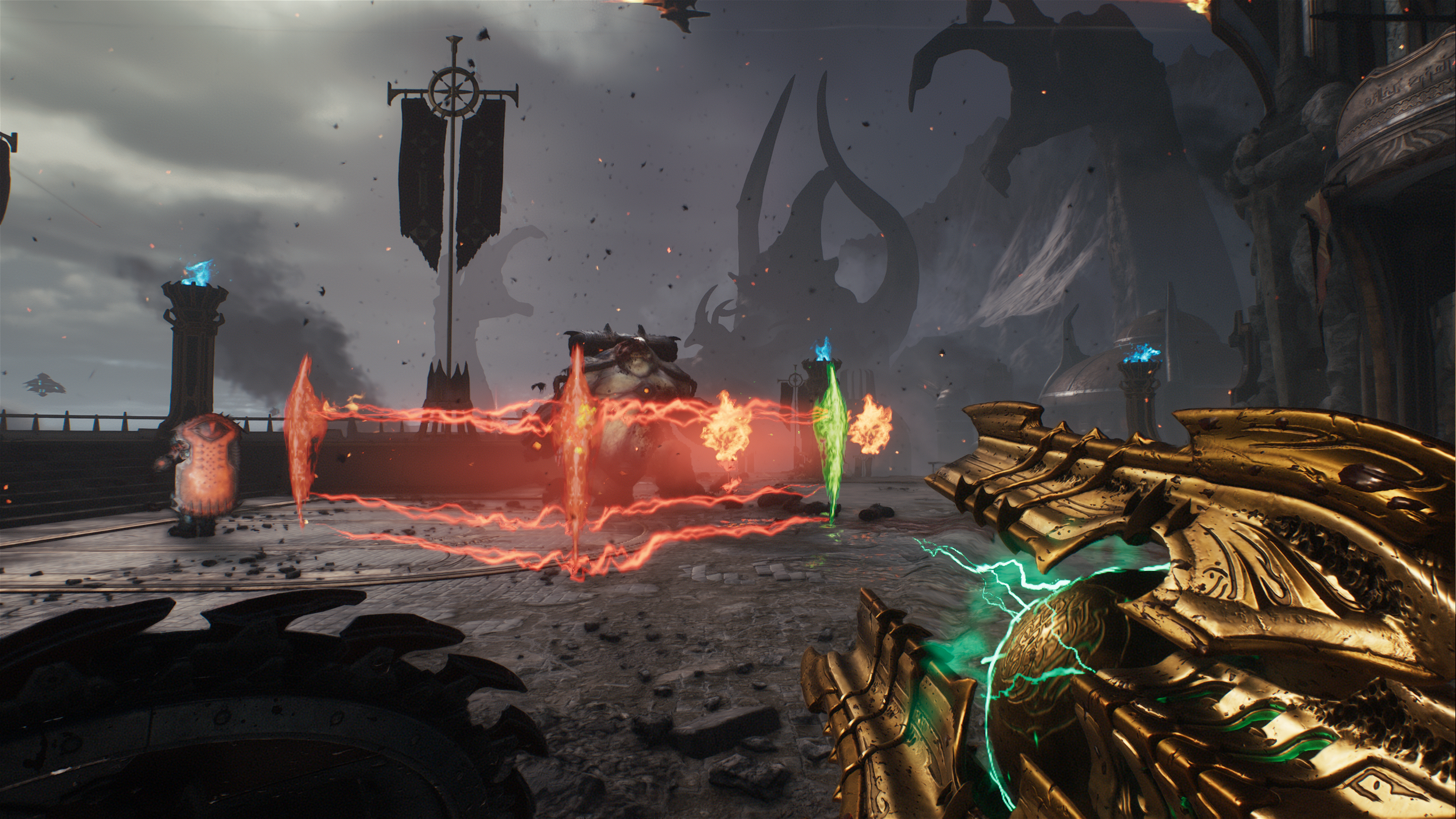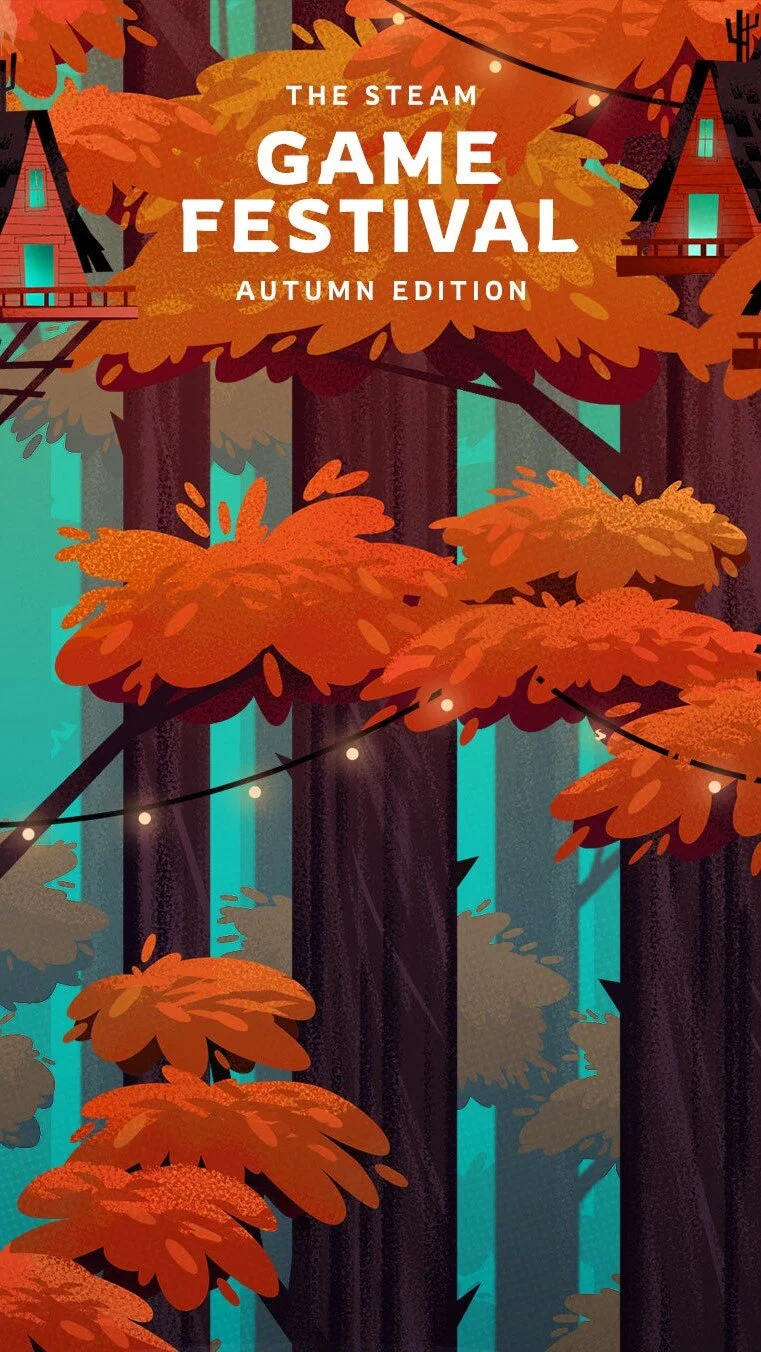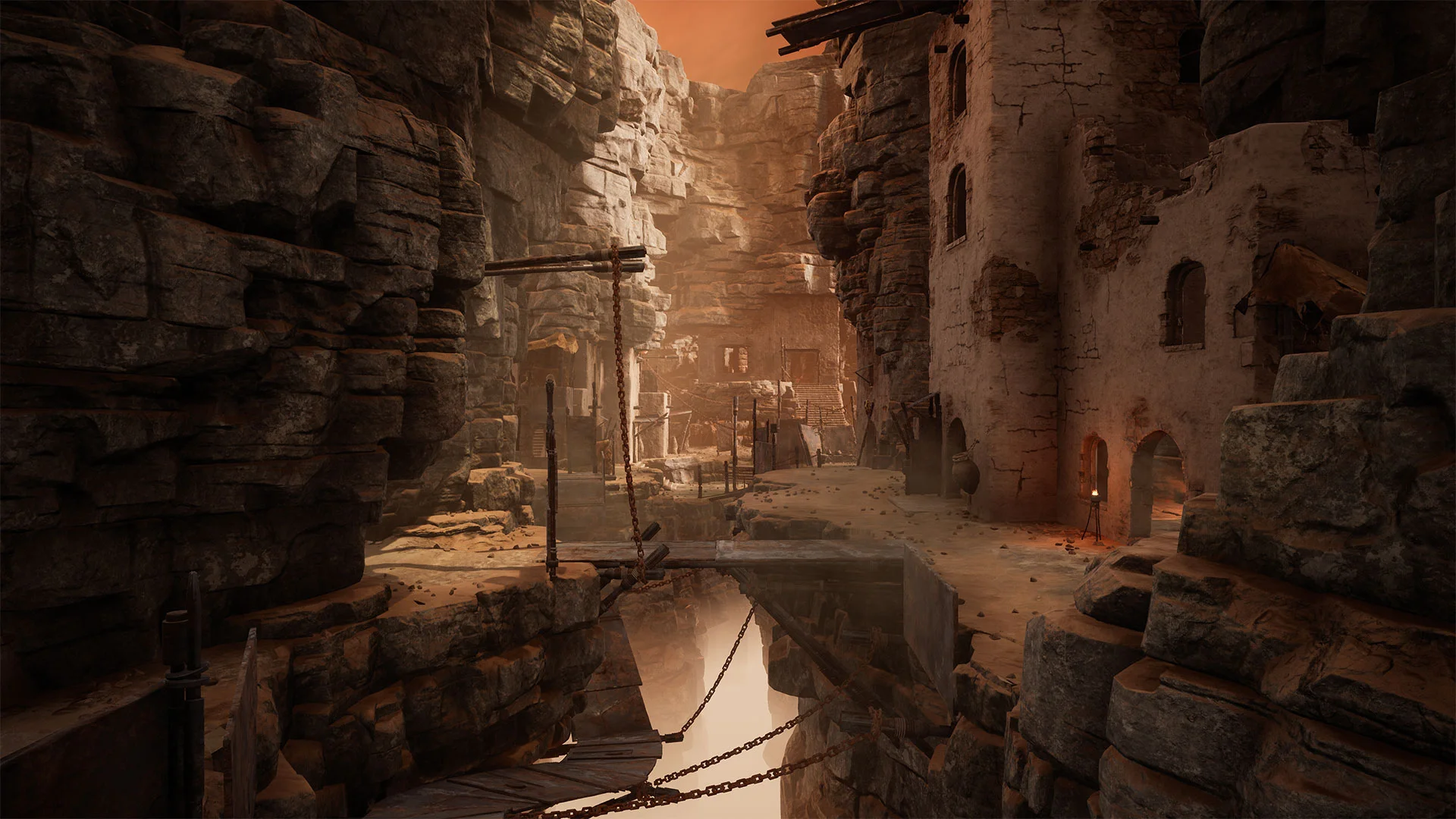DOOM: The Dark Ages
Roughly once a month, a song from DOOM (2016)’s soundtrack - “BFG Division,” to be specific - rumbles, unbidden, into my head. It spends a full minute of its eight-and-a-half-minute runtime ramping up to a titanic drop: deep, pulsing bass while synth strobes between speakers, high-pitched tittering fading in and out as the song builds and builds, exploding into a full-scale sonic assault. It’s a song that symbolizes the best moments of that game: exultant, indulgent, but measured and precise in its execution. It’s a song inextricably linked to both that game and the feeling that id Software had captured lightning in a bottle full of blood with the 2016 reboot.
Four years after 2021’s misunderstood DOOM Eternal, id Software has shifted gears with prequel DOOM: The Dark Ages, dropping the series’ largely-mute protagonist - the Doom Slayer - into a more fantastical period. There are dragons, the Slayer’s been gifted a buzzsaw-laden shield, and at one point, he gets a big flail. Y’know, “medieval stuff.”
On paper, it sounds great, and The Dark Ages succeeds at a good chunk of what it sets out to do. Unfortunately, an undercooked narrative and lack of precision in its tepid world design keep it from being a truly great game, despite it being the best feeling iteration of modern DOOM.
The setup is straightforward enough. Despite being billed as a prequel, The Dark Ages doesn’t spend any time actually establishing who the Doom Slayer is in the greater scheme of things, instead dropping him into a conflict between the human Sentinels of Argent D’Nur, the demons of Hell, and the bulbous, alien Maykrs. The Slayer, under Maykr [control/imprisonment/subjugation], is repeatedly shot down to the surface world when there are demons that need obliterating, and otherwise kept in a cell with guns trained on him at all times. Demons besiege humans, the Maykrs send the Slayer to intervene, people get double-crossed, and you’ve gotta shoot a whole mess of demons to solve some problems.
There’s not a ton of forward momentum here, and after the first few levels, you start to see noticeable jumps in the narrative where things that feel plot relevant happen off-camera, summed up in a single loading screen sentence. Eventually, the narrative is more or less sidelined, for digressions that felt like riffs on other games in the id catalog more than natural extensions of the DOOM cosmology. What’s more frustrating is that, in comparison to Eternal’s story, which felt ham-fisted and way less funny than it thought it was, there’s notes of something that could have been decent here. It’s clear that some care and respect was given to these characters, and I’m all for people trying to do something with this world and these ideas, but I just don’t see that in the game! It’s hard to care about your protagonists when they’re given so little screen time, few opportunities to actually develop as characters, and most of the humans we’re meant to empathize with have completely interchangeable names: Novik, Thira, Valen, Malok, you get the gist.
This is Novik and Thira. They are…present!
Getting back to those demons, the enemies in The Dark Ages feel distinct and almost* none of them feel laborious to deal with, slotting neatly into size ranges: your basic fodder enemies and grunts, larger enemies that can take a beating as you slowly shred their flesh away, and the larger “Leader”-class enemies that serve as heavier punctuation to combat encounters. Most enemies have received a visual update to keep them in line with the generally grittier world design, and I think these designs do a lot of the work in selling the idea that this is a dramatically different point in the greater timeline.
* Side-note: the penultimate and final bosses in The Dark Ages ARE laborious to deal with. They’re just the same fight, four times in a row, with no real ability/moveset changes between them. It’s an incredibly underwhelming pair of fights, and one of the lowest points in the game as a whole.
Dealing with them is less about the rote memorization of “which key opens which lock” that you’d find in DOOM Eternal’s robust but demanding combat puzzles. The guns you’ll use to dispatch those enemies are diverse, all of them carry serious weight, and they feel impactful: the skull-grinding Pulverizer gets the job done just as well as the plasma rifle Accelerator or the ever-crunchy Combat Shotgun. Worthy of a special shoutout is the Chainshot, which is just a cannonball attached to a retractable chain. It sounds stupid, it is stupid, and it’s satisfying beyond belief. At its heart, The Dark Ages has some of the best gunfeel of anything I’ve played in years.
Filling in for most of those aforementioned consumables is the new Shield Saw. In the lead-up to the game’s release, it felt out of place, but the mobility and stability that the shield provides throughout longer combat encounters makes it feel like a critical part of the Slayer’s kit. Apart from its use in exploration, the shield serves as a grappling hook in combat, pulling you towards enemies at breakneck speeds. Opposing projectiles can be blocked, and most enemies have parryable attacks, with a successful parry sending the foe into a stunned state, where they can be charged into and executed in a vein similar to the Glory Kills of 2016 and Eternal. The Shield Saw feels great, and paired with a baseline movement speed increase, it’s the fastest-feeling of any modern DOOM.
Any green (by default) projectiles can be parried, and they stand out very well in hectic battlefields.
It’s also the most accessible DOOM yet, with a generous and wide-ranging suite of options independent of the classic difficulty settings. Players can customize incoming and outgoing damage, projectile speed, the length of parry and stun windows, how generous resource drops are, and how aggressive enemies are in general. It’s a hugely welcome set of options that need to be noted before this review gets saltier.
The problems with The Dark Ages lie in its structure and its seeming unwillingness to be confident in its core gameplay. Many of the traditional run-and-gun levels are less linear affairs, with discrete battles plopped across more “open zone”-style maps. You’ll break sieges or go on the offensive by entering combat arenas and whittling away at smaller enemies until the arena’s Leader is able to be killed. You’ll rinse and repeat that same wave-based structure a few times on each level, move through a few checkpoints, and call it a day. There are some set-piece moments in these levels, but none of them are truly standouts. Most of the campaign’s levels feel like you could just slap different coats of paint on them and not a lot would change in terms of the actual combat feel. This arena’s in a forest! This arena’s in a base that sure looks like it’s on Mars, but it’s not because it’s in the past. This one’s in Hell! Wow!
Hell! Have ya heard of it?
With the broad majority of Dark Ages being these open zone maps, exploration and traversal takes up a bit more of your time in the campaign. This is…largely okay, I think, though the game’s interpretation of what constitutes a “secret area” is laughable at best. The world design gets a little lost at times in terms of making clear, readable spaces, and I found myself flicking back and forth through my map and the game world at a rapid clip, which makes these zones feel less like I’m truly exploring and more like I’m trying to piece together how far back I need to walk to get to the extra life sitting on the cliff in front of me.
What’s less okay is the two other modes of play in The Dark Ages: the Atlan and Dragon levels. Several times throughout the Slayer’s journey, he’ll either hop into a giant, Pacific Rim-ass “Atlan” mech or onto his personal laser-winged dragon, Serrat. The Atlan levels are straight-as-an-arrow riffs on Punch-Out where you’ll mash one of two buttons to get through combat encounters with big demons, and the Dragon levels are visually appealing but boil down to the same approach as the Atlan missions: dodging attacks, which supercharges your weapons, and then shooting your aggressor until they’re dead. Nothing about either of these modes of play are particularly exciting, and if they were both one-off instances, it’d be far more forgivable, but a full third of the campaign involves either an Atlan or a dragon.
Visually and technically, The Dark Ages is an undeniable showstopper. The overall vibe of the world is a bit dingier and muddier, and from an art direction perspective, I think the world isn’t always terribly exciting to look at, but there’s a real sense of scale to everything, with a full-on war serving as the skybox and background to many of the game’s levels. It feels like there are fewer regions for the Slayer to traipse through this time around, but these worlds are evocative enough and all of them do a great job of making the player feel like the world’s angriest little guy. I’m not nearly as die-hard when it comes to tracking and mitigating performance issues, but The Dark Ages runs incredibly well on both Xbox Series X and my now five-year-old computer.
We’ve gone this far without actually mentioning the music, and that’s because…well, it’s honestly forgettable at best, one of The Dark Ages’ biggest failings. DOOM (2016) - and, to a lesser extent, Eternal - put a tremendous amount of focus on layering the music into combat encounters, building and breaking tension as new waves of demons spawned in. TDA’s soundtrack, by comparison, feels like it’s present at best. I can’t name standout moments where the backing track kicked into overdrive because, for the life of me, I can barely remember more than a few moments where I noticed it was there at all. It’s a genuine bummer that something that feels like an integral part of “modern DOOM” has been relegated to the sidelines in such a profound way.
After grumpily wrapping up The Dark Ages’ campaign, I went back to play through the first levels of both 2016 and Eternal. Were my rose-tinted glasses coloring the perception of those games more than I expected them to? I came away from them with an appreciation for just how much quicker and cleaner The Dark Ages actually is, despite my complaints about its structure and ambivalence towards its narrative. While it sports the tightest and cleanest combat loop in the series to date, some spotty execution in its level design and the filler-at-best Atlan and Dragon levels really hamper the overall package.


